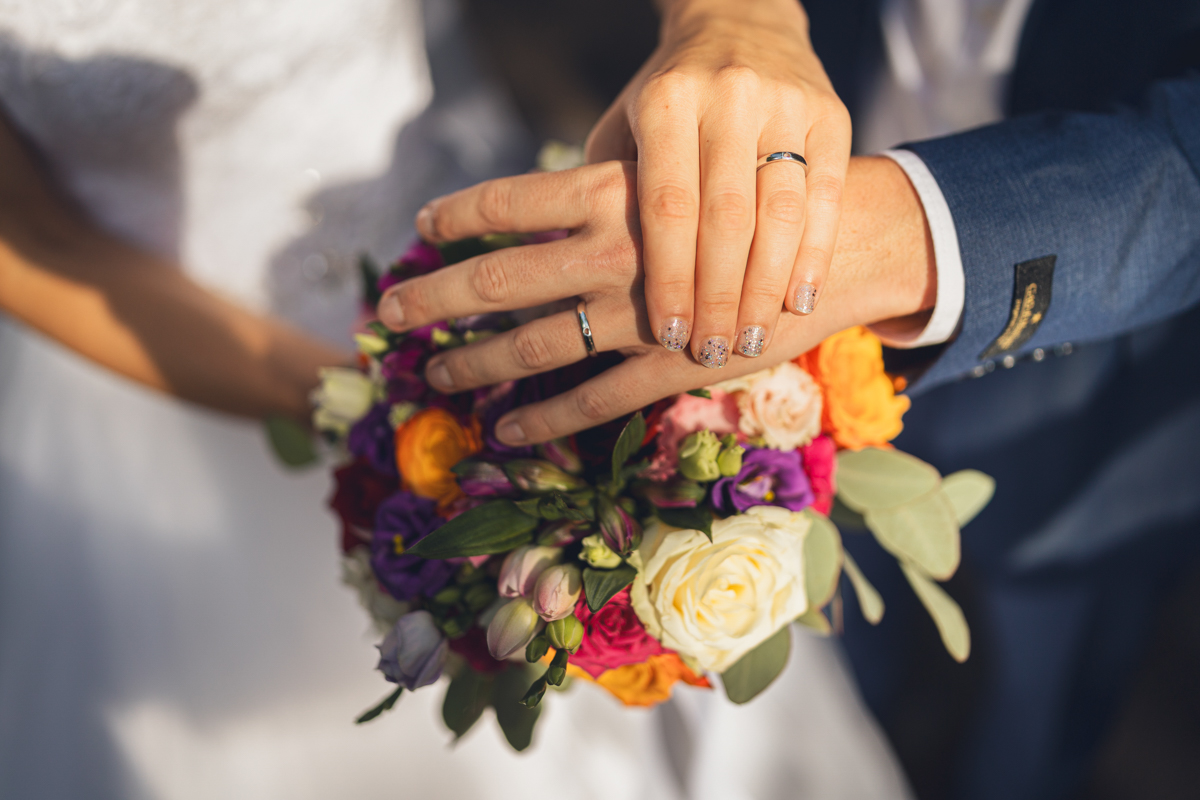The custom of wearing wedding rings is steeped in symbolism and romance, transcending time and cultures. For generations, these small but mighty symbols have carried a weight of significance far beyond their physical size.
Let’s dive deep into this enduring tradition to understand its origins and continued significance.
Why are wedding rings worn on left hand?
Wedding rings are traditionally worn on the left hand’s fourth finger due to an ancient belief that this finger has a vein directly connected to the heart, symbolizing love and commitment. This tradition, while anatomically inaccurate, remains a romantic notion in many cultures.
Historical Origins of the Tradition
The tradition of wearing wedding rings has ancient roots steeped in symbolism and meaning. This practice can be traced back to ancient civilizations like Rome, Egypt, and Greece, each contributing uniquely to its evolution.
- Rome: In ancient Rome, the belief that the left hand was more trustworthy led to the custom of wearing the wedding ring on the left hand. Romans thought the left-hand symbolized trust and loyalty, qualities essential in a marriage.
- Egypt: Egyptians valued the circle’s symbolism, seeing it as a sign of eternity. They believed that wearing a ring on the left hand’s fourth finger, which they thought contained a vein leading directly to the heart, would strengthen the bond of love.
- Greece: The belief about vein was later adopted by the Greeks, who also embraced the idea of the ring as a symbol of a binding contract between two hearts.
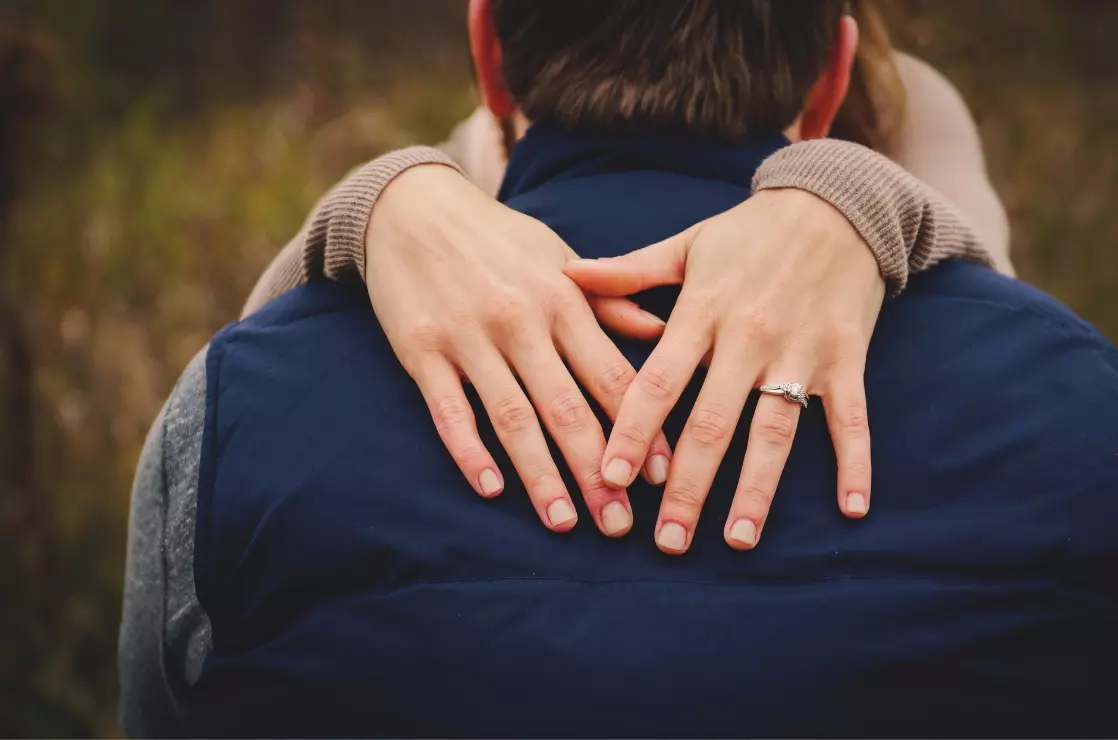
Anatomical Beliefs
The belief that a vein, known as the Vena Amoris, runs directly from the left ring finger to the heart has been a romantic, albeit anatomically inaccurate, notion that has influenced the tradition of wearing wedding rings on the left hand.
The heart, universally recognized as a symbol of love and emotion, gives this belief a poetic justification for the placement of the wedding ring.
While modern science has shown that all fingers have a similar vein structure and no single vein connects directly to the heart, the symbolic placement of the wedding ring on the left hand continues.
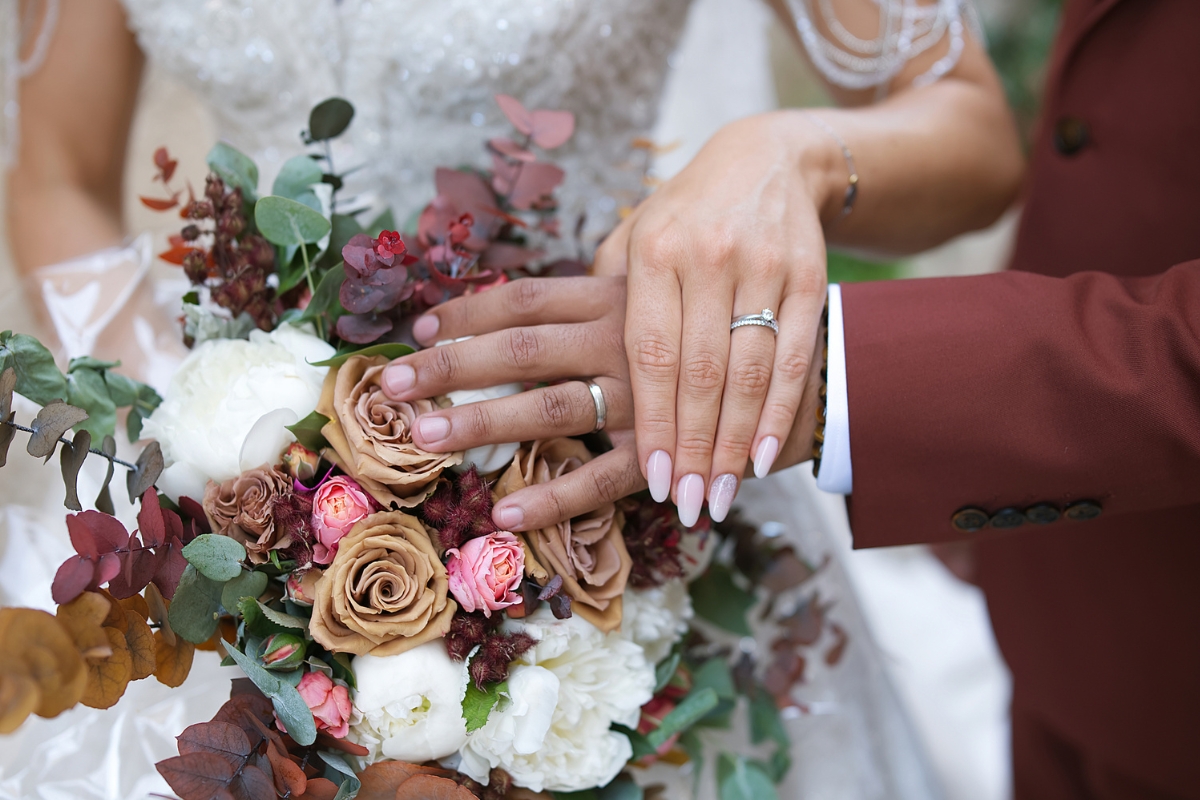
Cultural Variations
Across the globe, the tradition of wearing wedding rings varies significantly, influenced by local customs, religious beliefs, and cultural practices.
For instance, in many Western countries, the ring is worn on the left hand, following the Roman belief in the Vena Amoris. However, in some countries like Russia, India, and Norway, it is customary to wear the wedding ring on the right hand.
Which countries wear wedding ring on right hand?
According to the World Population Review, this is a list of countries that wear wedding ring on right hand:
- Austria
- Belarus
- Belgium
- Brazil
- Bulgaria
- Colombia
- Cuba
- Denmark
- Georgia
- Greece
- Hungary
- India
- Jordan
- Latvia
- Lithuania
- North Macedonia
- Norway
- Peru
- Poland
- Portugal
- Russia
- Serbia
- Spain
- Sri Lanka
- Sweden
- Ukraine
- Venezuela
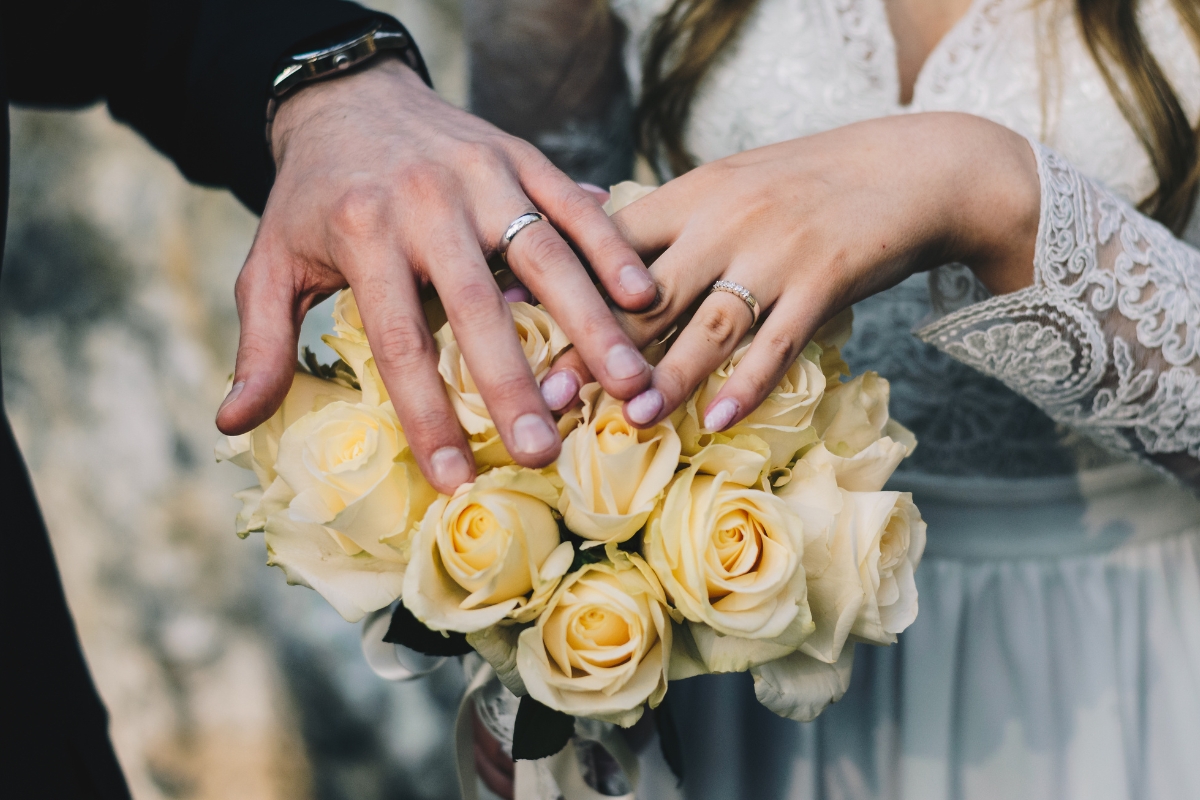
What does it mean when you wear your wedding ring on your right hand?
There are many reasons people wear wedding right on the right hand. Some of the reasons are:
- Cultural or Religious Tradition: In some cultures, as mentioned above, wearing the wedding ring on the right hand is a traditional practice, adhering to long-standing customs.
- Personal Preference or Comfort: Some individuals choose to wear their wedding ring on the right hand for comfort, especially if they are left-handed.
- Widowhood or Remarriage: In some cultures, widows or widowers may move their wedding ring to the right hand as a sign of their changed marital status.
- Symbol of Independence or Non-traditional Beliefs: Some people might wear their ring on the right hand as a symbol of independence or to signify non-traditional marital beliefs.
- Professional or Practical Reasons: Certain professions or activities might prompt individuals to wear their ring on the less dominant hand for practicality.
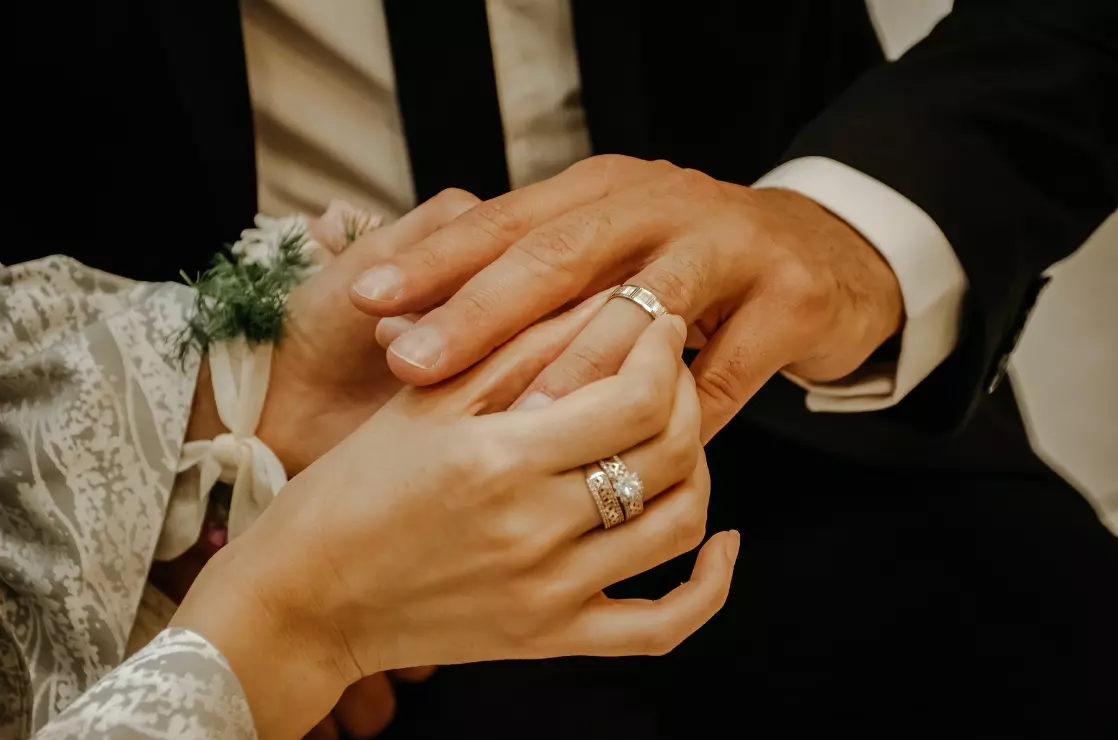
Symbolism of the Ring
Circular shape of the wedding ring represents eternity, with no beginning and no end, symbolizing the unending love and commitment between a couple. Rings are tokens of trust, loyalty, and the promise of a shared future. In many cultures, the ring is seen as a physical manifestation of the vows taken, a tangible reminder of the bond that the couple shares.
The Order of The Rings on Your Finger
You might be wondering how to wear engagement ring and wedding ring together. Here are some popular practices:
- Engagement Ring Switch: Just for the walk down the aisle, many women choose to switch their engagement ring to their right hand. This small but significant gesture makes way for a new symbol of their union – the wedding ring.
- Reuniting the Rings: After the wedding ceremony, you can then slip your engagement ring back onto your left hand, positioning it above the wedding band. This act represents the sealing of the promise made during the engagement with the solidifying commitment of marriage.
- Personal Preference in the Days to Follow: Once you are married, how you wear your rings is entirely up to you. Most people continue to wear their wedding band closest to their heart, first on the finger, with the engagement ring on top. However, the beauty of this tradition lies in its adaptability to personal preference and style. You may choose to wear them in a different order, or even on separate hands, as long as it feels right for you.
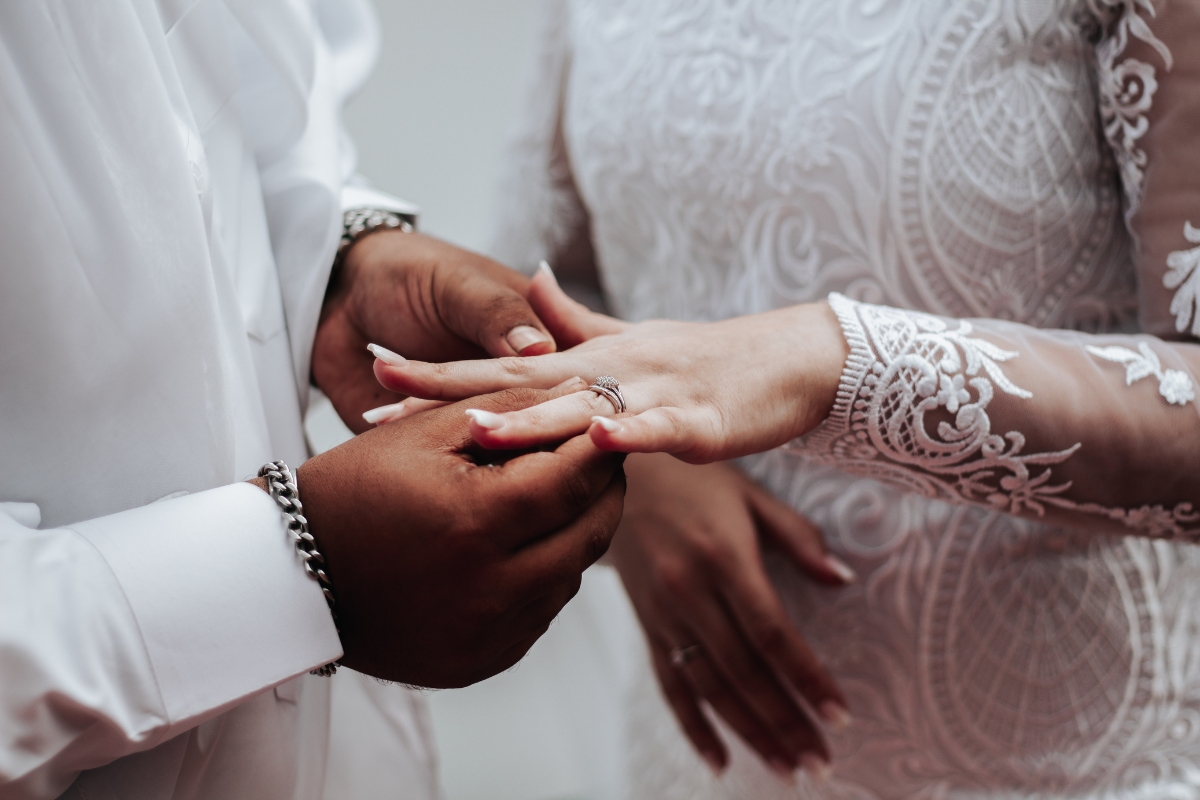
Ring Exchange Ceremonies Across Cultures
The ring exchange ceremony, a pivotal moment in a wedding, varies significantly across cultures, each adding its unique flavor to this universal symbol of love.
- Western Traditions: In many Western cultures, the ring exchange follows the vows. The couple slips the ring onto each other’s fingers, often accompanied by words that echo their commitment to each other.
- Indian Weddings: In India, the ring exchange, known as the ‘Ring Ceremony’ or ‘Engagement Ceremony’, can be a separate event preceding the wedding. It’s a festive occasion with family blessings, music, and dance.
- Jewish Ceremonies: In a traditional Jewish wedding, the groom places the ring on the bride’s right index finger, symbolizing her as the “index” of his heart. This practice is rooted in historical beliefs and varies in modern interpretations.
- Russian Orthodox Weddings: The ring exchange occurs during the betrothal part of the ceremony. Rings are initially placed on the right hands, and later switched to the left after the wedding.
- Swedish and Finnish Traditions: Both partners wear engagement rings. During the wedding, a marriage ring is added to the bride’s hand, and sometimes the groom receives a second ring.
- Eastern Orthodox Ceremonies: The rings are blessed by the priest and swapped back and forth three times between the couple, symbolizing that their lives are now intertwined.
Pin Why are wedding rings worn on left hand for later or for your friends:
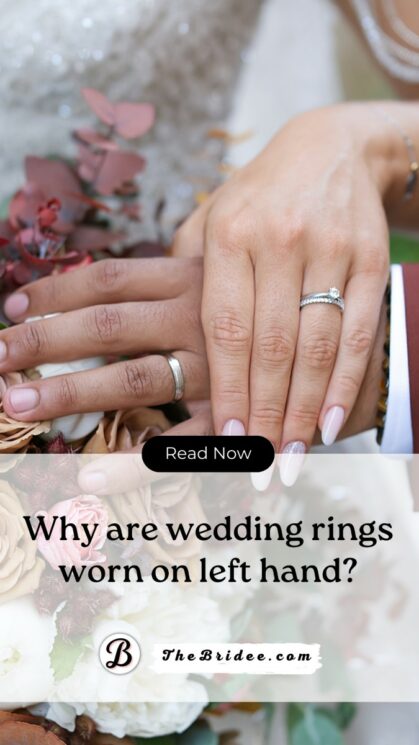
Did this post help you? Share it with your friends! It can help them.

